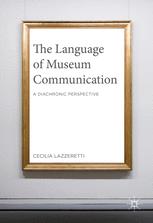

Most ebook files are in PDF format, so you can easily read them using various software such as Foxit Reader or directly on the Google Chrome browser.
Some ebook files are released by publishers in other formats such as .awz, .mobi, .epub, .fb2, etc. You may need to install specific software to read these formats on mobile/PC, such as Calibre.
Please read the tutorial at this link: https://ebookbell.com/faq
We offer FREE conversion to the popular formats you request; however, this may take some time. Therefore, right after payment, please email us, and we will try to provide the service as quickly as possible.
For some exceptional file formats or broken links (if any), please refrain from opening any disputes. Instead, email us first, and we will try to assist within a maximum of 6 hours.
EbookBell Team

4.4
82 reviewsThis volume explores the evolution of the language of museum communication from 1950 to the present day, focusing on its most salient tool, the press release. The analysis is based on a corpus of press releases issued by eight high-profile British and American museums, and has been carried out adopting corpus linguistics and genre analysis methodologies. After identifying the typical features of the museum press release, new media more recently adopted by museums, such as web presentations, blogs, e-news, and social media, are taken into consideration, exploring questions such as how has the language of museum communication changed in order to face the challenge posed by new technologies? Are museum press releases threatened by new approaches used in contemporary public relations? Are the typical press release features still detectable in new genres? Drawing on insights from linguistics, discourse analysis, and museum communication this book will be of great value to researchers and practitioners of applied linguistics, sociolinguistics, and museum communication scholars.